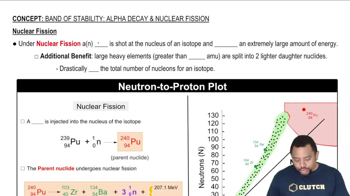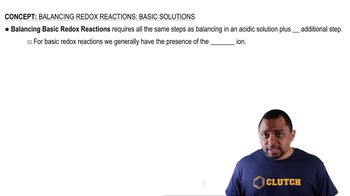Here are the essential concepts you must grasp in order to answer the question correctly.
Nuclear Fission
Nuclear fission is a process in which a heavy nucleus, such as uranium-235, splits into two smaller nuclei, along with the release of energy and neutrons. This reaction can be initiated by the absorption of a neutron, leading to a chain reaction that is fundamental in nuclear reactors and atomic bombs.
Recommended video:
Band of Stability: Nuclear Fission
Balancing Nuclear Reactions
Balancing nuclear reactions involves ensuring that the total number of nucleons (protons and neutrons) and the total charge are conserved on both sides of the reaction equation. This is crucial for accurately representing the products of a fission reaction, such as the formation of xenon-144 and strontium-90 from uranium-235.
Recommended video:
Balancing Basic Redox Reactions
Neutron Production in Fission
In a typical fission reaction, the splitting of a heavy nucleus not only produces smaller nuclei but also releases additional neutrons. These emitted neutrons can further induce fission in nearby nuclei, perpetuating the reaction. The number of neutrons produced can vary, but in the case of U-235 fission, it typically results in the release of 2 to 3 neutrons.
Recommended video:
Band of Stability: Nuclear Fission




